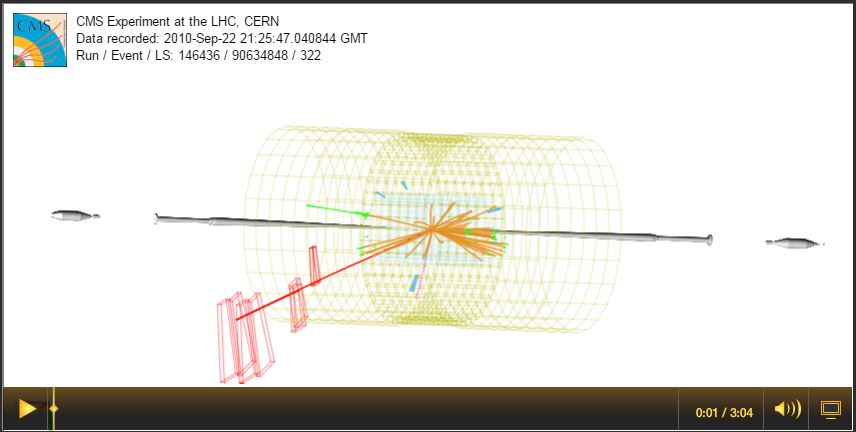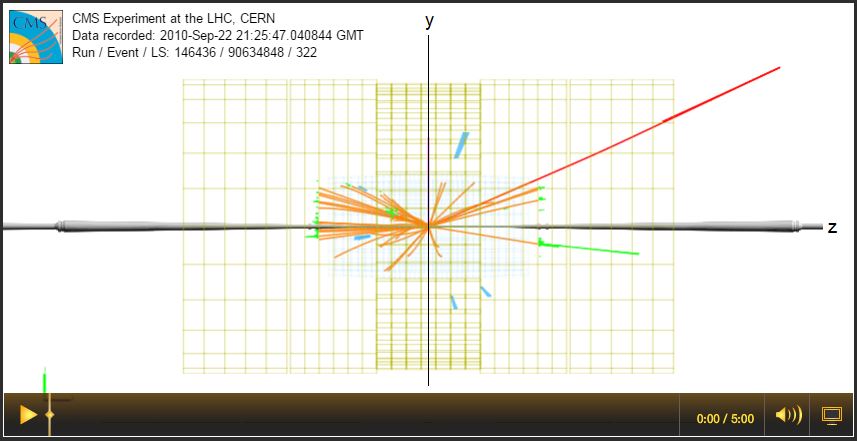Geometry of a Collider Detector
The detector for a collider should be able to wrap around and enclose the collision point as much as possible. So, here is what we need to know:
- The shape of the detector is roughly cylindrical
- The beam goes through the cylinder axis with collisions at the center of the detector.
- The beam axis is usually designated as the z-axis.
- The y-axis is perpendicular to the z-axis and vertical; +y is "up" toward the zenith.
- The x-axis is perpendicualr to the z-axis and horizontal; in the LHC, +x is toward the center of the accelerator ring.
- Physicists use polar angles φ and θ as well as an angle-like parameter η to describe the direction of a track or of the momentum vector of a particle.
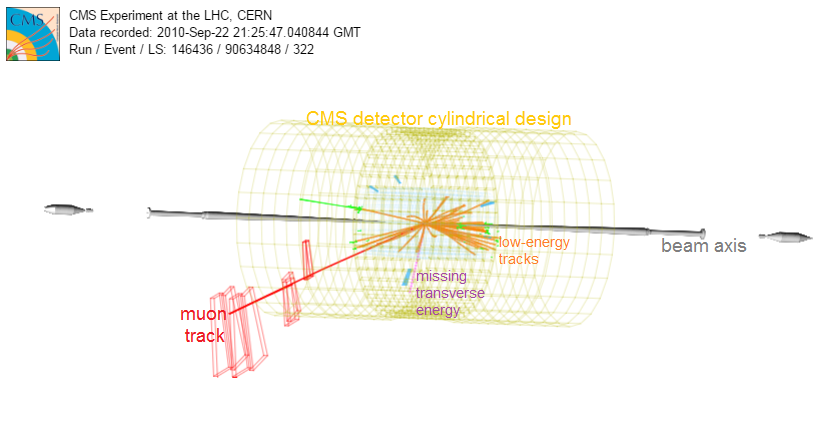
To learn more, please choose the images below to open each of three instructional screencasts.
Even more: note the components of the momentum vector of the muon.
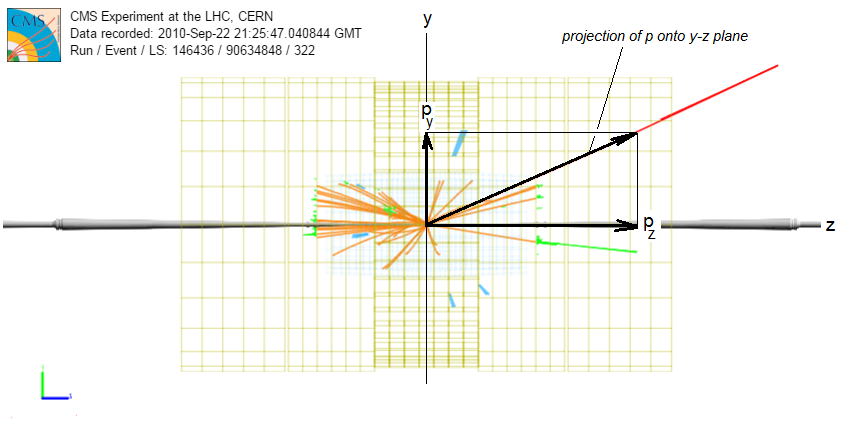
In the side (y-z) view, we see the momentum vector as projected onto the y-z plane. The z-component of the momentum is marked pz and goes along the beammline. This is also sometimes called the "forward momentum" (whether it goes in the +z or the -z direction) as opposed to the transverse momentum, described below. With the forward and transverse momenta and directions φ and η, the momentum vector of the particle is described completely.
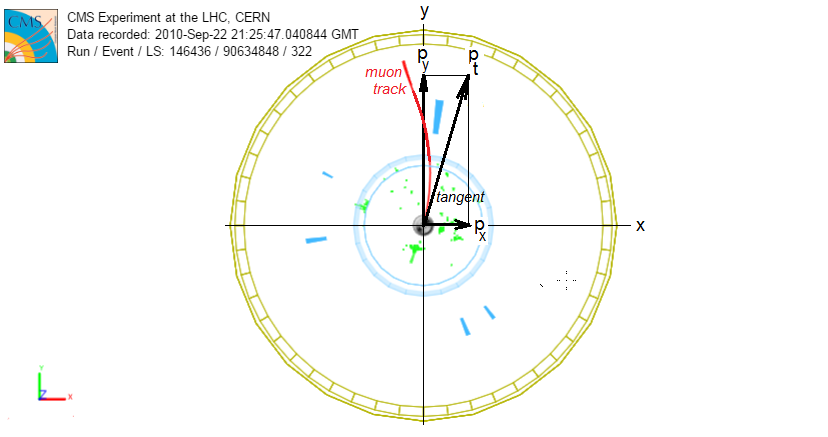
In the forward (x-y) view, we see the muon track is curved due to the solenoidal magnetic field of CMS. The momentum of the muon at the vertex, then, is tangential to the track. This vector is the transverse momentum pt of the muon because it makes a right angle with the beamline and is in the transverse (or x-y) plane. Its relationship to the x-and y-components of the momentum is pt2 = px2 + py2 and the net momentum of the particle is given by p2 = pt2 + pz2.

